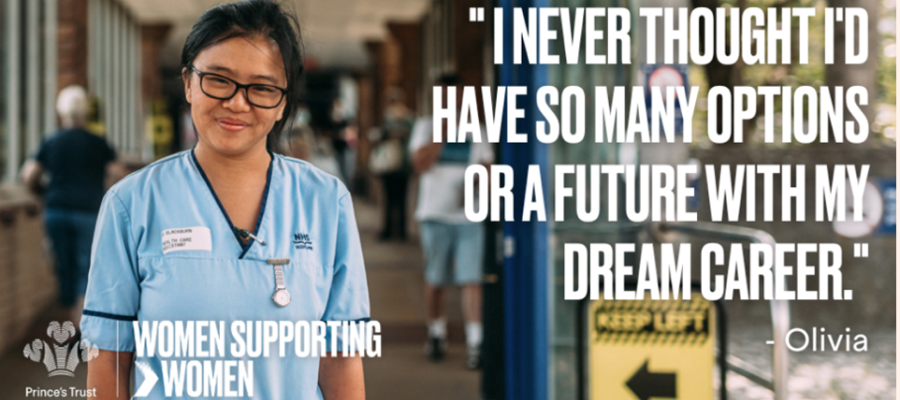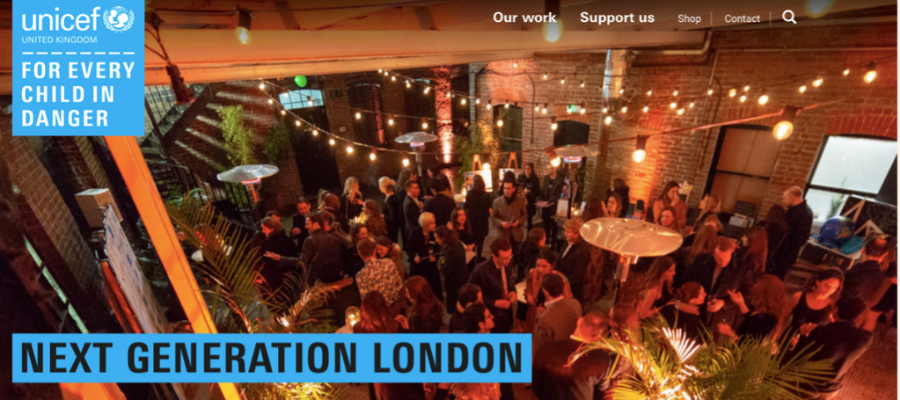Exploring the evolution and trends of mid-level fundraising
What is the difference between major and mid-level giving? What changes are we seeing after years of traditional mid-level programmes? What charities have been innovating in this area of fundraising? In a special long read written especially for SOFII, Simon Dickson explores all these questions and kick starts your thinking about what mid-level giving could look like at your charity.
- Written by
- Simon Dickson
- Added
- March 23, 2023
Often, philanthropy programmes are preoccupied with major gifts. But you shouldn’t underestimate mid-value giving – either on its own or as a pathway to larger gifts. Effective mid-value programmes (built on the same strong relationship management principles as major giving) can help you create strong pipelines of both high-net-worth individuals (HNWIs) and foundation funders. They can also act as a testbed for those who want to start a relationship and build trust before giving or asking for more.

Crunching the numbers. What does ‘mid-value giving’ mean for your charity?
Defining who is a ‘major’ or ‘mid-value’ donor for your charity is subjective. Whether you see a donation as sufficiently large for an individual to qualify as a major donor depends on the size of the gift compared to overall voluntary income, total income from individuals, or the size of most donations you receive. Therefore, the definition of a major gift for you may well change over time as your programme matures and you become more ambitious with philanthropy. For some organisations, a major gift may mean a gift of £10,000 or even less. For others, it could be £10 million or more (often called principal gifts).
Mid-value gifts can span the gap between individual giving (cumulative gifts usually well below £1,000 per annum for UK charities) and major donations of £5,000 and above. But again, the boundaries blur. Mid-level giving is not as predictive and process defined as lower-level individual giving programmes. It is also not as exciting as a million-dollar major gift prospecting and cultivation. However, when done correctly and borrowing from the best of both disciplines, mid-level giving can generate significant returns for your charitable organisation.
In fact, not only do mid-level donor prospects represent significant income potential, but they are also loyal. If stewarded properly, perhaps even more so than major donors, and are a reservoir of steady support, new prospects and volunteers for organisations they feel connected to and passionate about.

What are the characteristics of a traditional mid-value giving programme?
While programmes vary in scope and size, there are a number of common threads uniting successful middle-giving programmes. These have become evident to me, after exploring this income stream over many years:
a) Staffing – Programmes performing well both in terms of income and donor loyalty are adequately staffed. For a smaller organisation, this may be just one fundraiser – but that role is directly accountable for growing and stewarding the programme. Only dedicated staff can deliver the level of personalisation that makes mid-level givers feel special. They know how to develop events, opportunities or communications that deliver the other key element – exclusivity, access and special status.
b) Intellectual content – The ideal strategy for middle donor content aligns more closely to what is developed for major donors than lower value direct mail donors. Mid-level donors respond to appeals with substantive programme content and intellectual robustness. Updates from the Executive Director and senior programme staff are well received. A personal touch is a must and successful programmes tend to treat supporters as investors – using language that explains outcomes and impact rather than relying purely on emotional content.
c) Stewardship focus – Successful mid-level fundraisers devote at least as much time to stewardship as they do to asking. This approach does not need to be expensive. Simple e-newsletters are common, but communications usually come from a named contact to continually grow relationships. Low-level giving programmes often have high volumes of asks each year. Mid-level donor programmes send far fewer specific requests although programme updates often trigger donations. ‘Emergency’ appeals are often sent to these groups of ‘nearest and dearest’ supporters, those who expect to be asked first.
d) Branded groups – successful programmes often have branded group names. Titles such as Inner Circle, Pioneers, President’s Circle, 100 Club, or Guardians suggest both an element of exclusivity and closeness to organisation’s leadership. This helps communicate to donors that they are part of a special group, one that commands the attention and respect of the organisation.
e) Listening not telling – Listening is critical to good donor relationships and donors appreciate having the opportunity to express themselves. Being heard tells the donor he or she matters. A number of successful mid-value programmes ask donors to complete supporter surveys while more sophisticated engagement enables donors to feedback on campaigns and programmes. All of this enables organisations to better understand donor motivations and preferences and to build stronger relationships. Higher income is the result.

The evolution of mid-level giving has already begun.
Trends in the wider major donor market are already having real impact on philanthropy programmes. A couple of these are based around changes in who is giving, what they are giving to, and how they are giving:
- Data suggests that women comprise 11.2 per cent of Ultra-high-net-worth individuals (UHNWIs) in Europe and 11.3 per cent in North America. This compares with 13.6 per cent in Asia. While still modest, Wealth-X’s report indicates that the proportion of women among UHNWI donors and in the global ultra-wealthy population is on a gradual upward trend. This shift is taking place as a result of changing cultural and societal attitudes, growth in female entrepreneurship, an increasing focus on gender equality issues, and a rapidly growing number of intergenerational wealth transfers to daughters as well as sons.
- The 2017 Fidelity Charitable report, Women and Giving: the impact of generation and gender on philanthropy, finds that younger female donors are more driven by causes when making donations. There is considerable evidence that women are more likely to give to causes with a strong focus on the rights of women and girls.
- The average age of a UHNWI globally is 64. In North America only 6.2 per cent of UHNW donors are under 50, with this figure rising to 12.5 per cent in Europe. In Asia, it rises to 18.2 per cent. U.S. studies show that younger donors – including younger High Net Worth Individuals (HNWIs) – have different giving preferences to those of older generations. An informal survey by the Dorothy A Johnson Center for Philanthropy showed that, of 110 next-generation donors with a capacity for major gifts, many went beyond traditional giving. Nearly 70 per cent took part in activism, others made investments to help Black, Indigenous, and People of Colour (BIPOC)-owned businesses access capital. Giving to racial justice and gender equality has grown significantly. In summary, younger major donors tend to give their money in a more targeted way than their older counterparts.
Clearly, the above relates to the very wealthy and there lots of younger HNWIs and female philanthropists giving very significant donations. But there are also large numbers of fledgling philanthropists who may have the propensity to give, but currently lack the capacity to give five or six-figure donations. This may well change as their capacity grows. But in response to these trends in the wider market, some charities are developing mid-value programmes which target a particular demographic, such as younger or female philanthropists.
But who is already doing mid-level giving differently? Let’s take a look…

The Prince’s Trust – Women Supporting Women
In 2018, The Prince’s Trust began Women Supporting Women. This collective aims to help young women who face disadvantages and adversity, as they work to transform their lives. They say, ‘the collective is committed to raising funds so that more young women can build their confidence and receive support to get into jobs, self-employment, education or training.’
The programme includes fundraising – personal giving via a company or fundraising through activities and events – but members of the group can also provide practical advice and mentoring to those that what it. Women Supporting Women has set an ambitious target of raising £10m over five years and has an impressive membership of female business leaders and philanthropists.

UNICEF – NextGen
UNICEF NEXTGen London, a fundraising group of young professionals, raised £1 million between its 2014 inception and June 2017. Since then, it has gone on to even greater fundraising success. The total raised by the group (set up by Layla Yarjani and Hortense Decaux, who now lead the initiative across Europe) is the result of a series of successful fundraising events and initiatives including the #CookForSyria and MIGRATE campaigns. Members also generate a large amount of social media activity. No financial commitment is requested as part of membership.
NEXTGen London members have been involved in UNICEF’s campaigning for the children of Syria and have donated other skills and consultancy services in support of the charity’s work. On the seventh anniversary of the start of the conflict in Syria, UNICEF NEXTGen London announced that it had doubled the amount it had raised to support UNICEF’s work with Syrian children – in under a year.
While the target audience may differ from traditional mid-value giving programmes – giving groups targeting other demographics still borrow the best of both individual giving and major donor fundraising. This is a combination of personalised direct marketing and bespoke engagement.
Increasingly, with giving groups, there is a minimum financial commitment requested over a period of three or more years – usually as an unrestricted gift. But some organisations have tiers of membership (e.g. bronze/silver/gold/platinum), which are dependent on giving levels. They also provide donors with a range of benefits including personalised updates on the nonprofit’s work, access to expert briefings and invitations to special events. In other words, they have distinct stewardship programmes, often with a named member of staff acting as the core point of contact. However, the content of updates and focus of events appeals more directly to the motivations and interests of the different demographics involved.
So, what does this mean for the future of mid-level giving?
Classic mid-value giving groups clearly have a place within the heart of many nonprofit philanthropic fundraising activities. Many of the core characteristics such as tailored events, personalised updates and a minimum financial and timeframe commitment are used across the sector.
However, some charities have chosen to step away from the standard model which is open to anyone with the propensity, ability and capacity to give. Instead, they are targeting key sub-groups within the major donor community, such as women or young people.
While this is an obvious move for those charities for whom women and girls or young people are a programme area focus, attracting and maintaining new and diverse funders can and should work across all causal areas. This more nuanced and targeted approach allows charities to tap into these groups’ desire to support with with peers and to make a real impact through greater and more appropriate engagement.
Therefore, if you are considering setting up mid-value giving groups, you should consider the emerging trends in this space and ensure you feed these into the design and delivery of any new initiative you start.
















